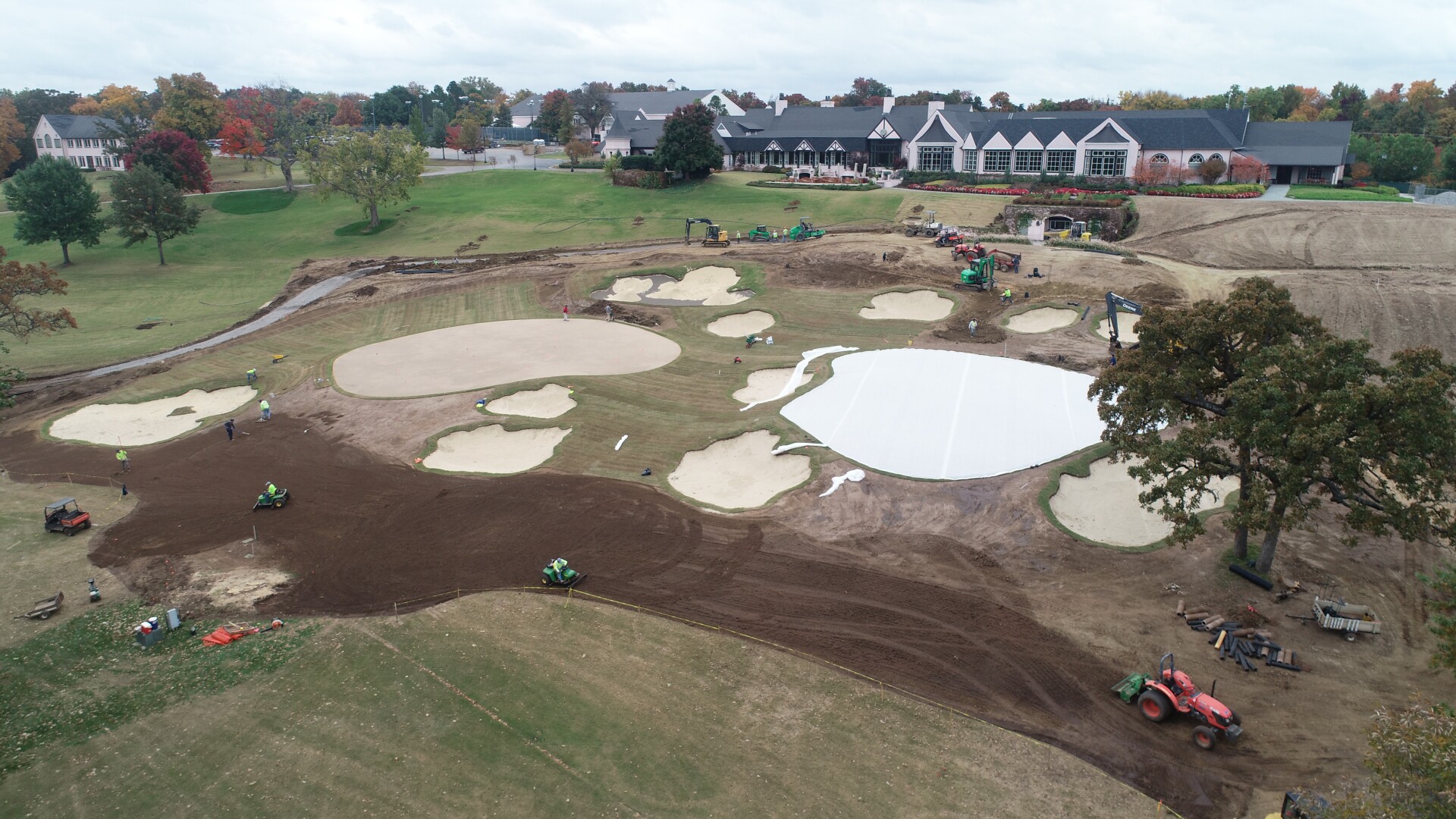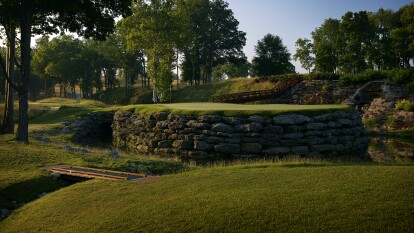Gil Hanse wasn’t sure he wanted to oversee a restoration of Southern Hills Country Club.
The famed golf course architect had never been to the golf course and was only slightly familiar with the venue given it had been hosting major championships since the 1950s. Otherwise, Hanse and his partner, Jim Wagner, were largely in the dark about the initial Perry Maxwell design which opened in Tulsa, Oklahoma in 1936.
“I honestly didn’t know what to expect,” Hanse said when he was asked by the course superintendent, Russ Myers, to come out and take a look at the golf course. “I knew what it looked like in the modern context, and what it had become, but what did it look like originally? The more we dug into what it originally looked like, the more appealing the project became for us.”

Digging into the original intent of the golf course architect, in this case, Maxwell, was one of the first steps Hanse and Wagner took before any work began on the golf course. Hanse believes all great courses have a sense of place, and they sought to figure out what that was for Southern Hills Country Club. The Monterey Peninsula and the Northeast were two prominent examples Hanse pointed to in illustrating a sense of place, but his team had never tackled a project in Oklahoma and had never restored a Maxwell course before.
“What does the golf course in Oklahoma look like? Trying to figure that out and understand what Maxwell believed a golf course in this part of the country looked like, that was unique since we never worked in this part of the country and never worked on a course by that architect.”
Hanse and Wagner spent months learning about Maxwell’s original vision for Southern Hills Country Club, which was constructed during the heart of the depression. At that time, not much golf course activity was taking place, so the course’s construction was well-documented. Clyde Chrisman, the historian at Southern Hills Country Club, provided Hanse with numerous aerial photographs of the course in its early years which he was able to rely on in developing a master plan for the historic restoration.
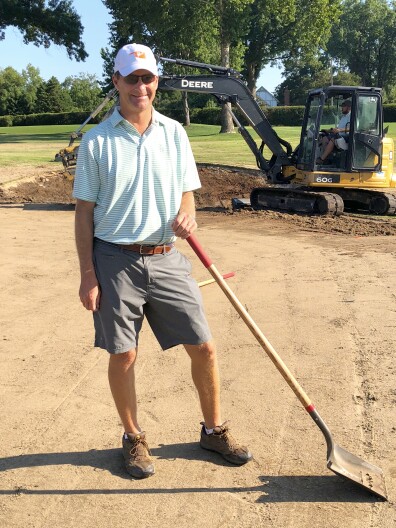
That term, historic restoration, was carefully chosen and a deliberate one by Hanse. He feels the term is the best way to describe the work they did at Southern Hills Country Club. While the original photographs and information they were able to gather through their research largely steered their work, Hanse also acknowledges having to take liberties in making certain decisions in order to update the design in ways that would challenge the golfers of today.
“We don’t renovate, we’re not restoring. We’re not putting [bunkers] back exactly in the same location, so I think it helps us blur the lines,” Hanse explained about the work they did at the major venue. “A renovation we’re putting our own design into the golf course and we didn’t really do that. At Southern Hills, it was more using Maxwell’s original ideas and just updating it to the modern game.”
The historic restoration took place between 2018 and 2019. And one of the biggest changes Hanse made, based on Maxwell’s design, was in restoring the short grass throughout the course and removing nearly all the rough. The elimination of the rough, in addition to the removal of 300 trees, which started prior to Hanse’s restoration, opened up fairways across the course.

The creeks that ran throughout the major venue, which had been filled in over the years, were also reopened. Additionally, the edges of the greens, which previously stopped wayward approach shots from rolling off the putting surface, were removed.
“Where [the ball] ends up and the shot they are faced with, I think are going to be really interesting,” Hanse said about what players will face during this week’s championship. “Those are issues that the player is going to have to solve.”
How the world’s best players navigate those challenges, and the creativity they employ to do so, is what Hanse is most looking forward to seeing during the PGA Championship. While it’s good for a player to hit the middle of the fairway and the subsequent green, for Hanse and Wagner it doesn’t provide much interest from the vantage point of a golf course architect.
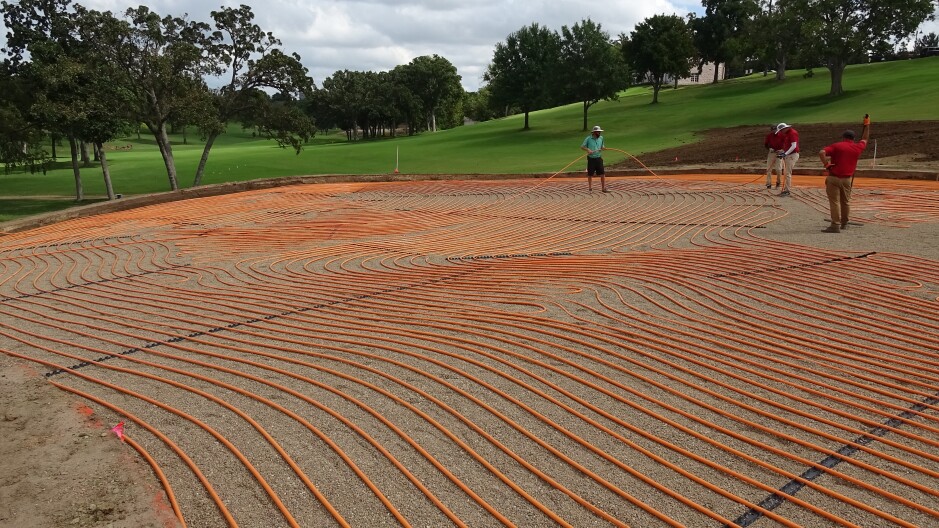
“It’s that recovery, the question the golf course asks when the player goes a bit sideways and the answer the players comes up with,” Hanse explained, “that’s always the most interesting thing from our perspective.”
Hanse is humble in his assessment of how he believes his team has done in restoring the Perry Maxwell layout to its original design. “Very successful, modestly speaking,” he says when asked about their final result.
Hanse and Wagner sought to recapture the vision that Maxwell painted in not only what he wanted the golf course to look like but ultimately how he wanted it to be played. What Maxwell imagined was possible when the course was constructed in 1936 is no doubt different from how the game is played in 2022, but Hanse is confident that Maxwell would still be able to recognize his course even today as it hosts the best golfers in the world.
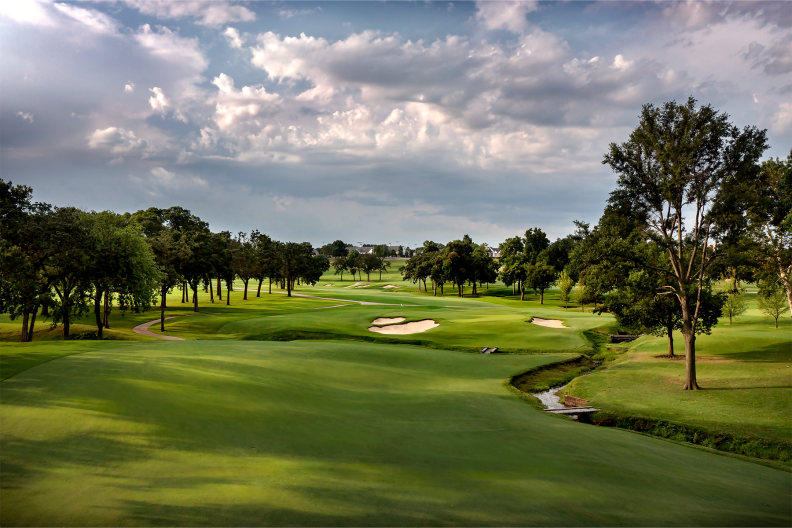
“We’re excited for these guys to be challenged by what we believe is a true representation of Perry Maxwell’s work.”

